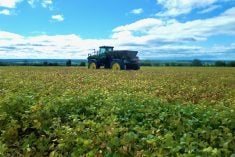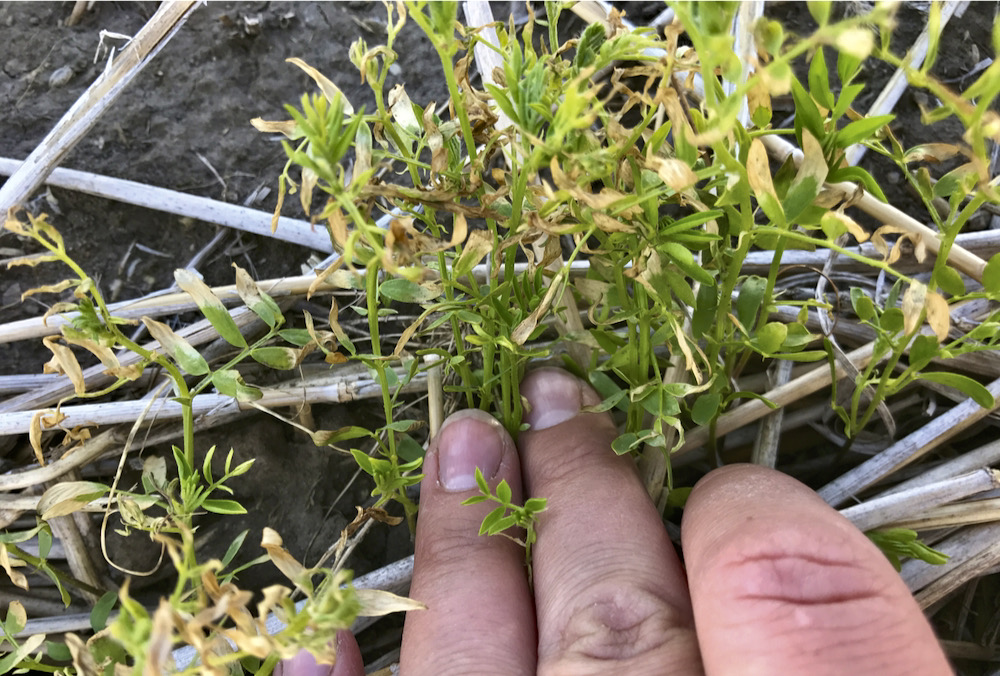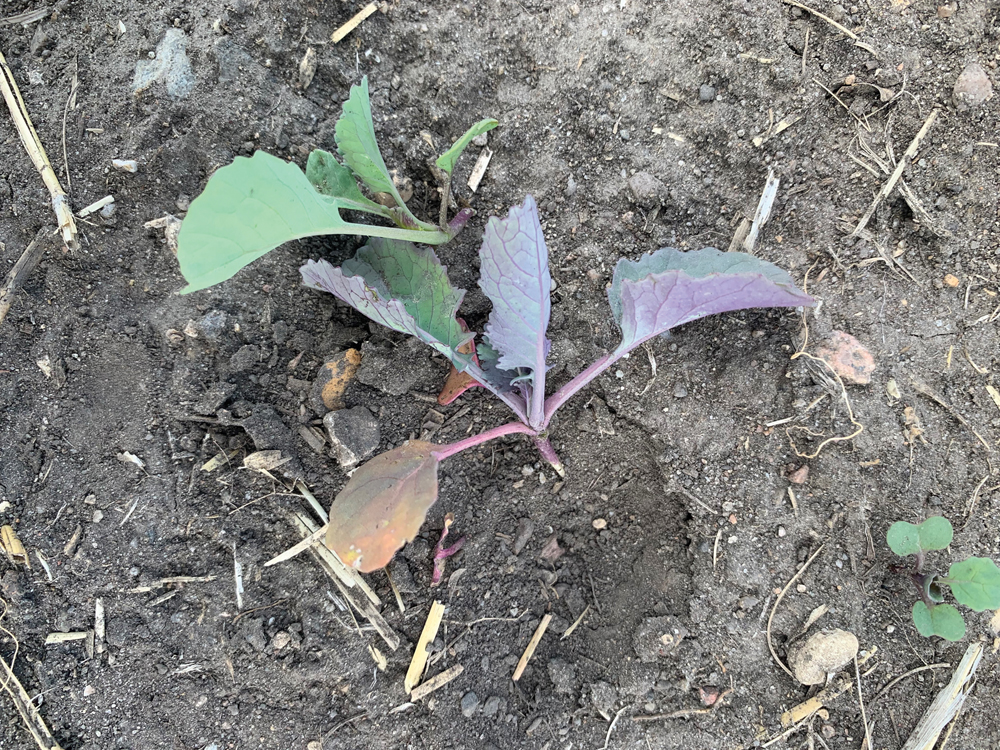
Adrian called me in early July 2017 about the poor plant stand in his soybean field. The soybean plants were wilting and dying off after emergence.
“I’ve got plants turning brown and dying off in my soybean field,” he said. That afternoon I set off for Adrian’s 3,500-acre grain farm located just outside of Dauphin, Man.
Adrian is an experienced soybean grower and has been implementing a good rotation of canola, soybeans and wheat. He found a soybean variety he really likes to grow, and he has grown lots of it. Adrian also uses a seed treatment to control soil-borne disease and insects.
In the field, soybean growth and development had stopped. The injured plants had a collapsed and wilted appearance; the leaves were brown, drooping and still attached to the dead plants.
Additionally, the plants had brown lesions on the stems above the soil surface. They also exhibited very poor root growth with no lateral root development. I could easily pull the plants out of the ground because of the small taproots and the absence of lateral roots.

I looked for indications of moisture stress, fertility or seeding issues.
It had been drier than normal that season; however, this particular area had received more precipitation than others in the region and had sufficient moisture. In addition to weather events, some of the injured plants were located in the low-lying areas where there would have been more than adequate moisture. This evidence helped rule out moisture stress.
A nutrient deficiency was also unlikely as the plant symptoms did not support this theory. Additionally, Adrian had a healthy fertility program and his fertilizer rates and placement followed best practices for the soil and crop type.
Seeding issues were also ruled out because seed depth and seeding rates were correct and the seeding equipment was working properly.
Read Also

Cancer agency reclassifies another herbicide ‘probably carcinogenic’
The WHO’s cancer research agency has now put atrazine, a herbicide well known to corn growers, in the same potential-hazard category where the agency put glyphosate.
The injured plants were more prevalent on the headlands, low-lying areas and in the sprayer tracks.
Crop Advisor’s Solution: Rotate phytophthora-resistant soybean varieties to keep ahead of this fungus
Adrian is an experienced soybean grower. He found a soybean variety he really likes to grow, and he has grown lots of it. This was one clue to solving the mystery.
The other was the location of the injured plants on the headlands, low-lying areas and in the sprayer tracks. The injured plants were more prevalent in compacted, high-moisture areas of the field.
The plant symptoms were caused by an infection of the phytophthora fungus. Although Adrian used a soybean variety that was resistant to phytophthora, because he grew the same variety each time the infection levels built up in the soil, and the variety’s resistance to the fungus was eventually overcome.
The soil compaction and moisture increased the occurrence of phytophthora in those areas. Although Adrian used a seed treatment to protect the seedlings against this fungus, the active ingredient used to control phytophthora, metalaxyl, must be applied at a higher rate in order to control the disease in high-risk scenarios.
It is important to rotate varieties with different race-resistant genes. Field drainage and avoiding unnecessary soil compaction will further improve phytophthora management.
At harvest, only a slight yield loss occurred. In 2018, because of the changes Adrian made with respect to soybean variety, soil compaction and field drainage, very little phytophthora infection was observed in his soybean fields. That year, Adrian’s yields improved.
Crop rotation in conjunction with changing up disease-resistant varieties is an effective strategy to prevent disease build-up and variety resistance.
Sam Ross works for Richardson Pioneer Ltd. in Dauphin, Man.















